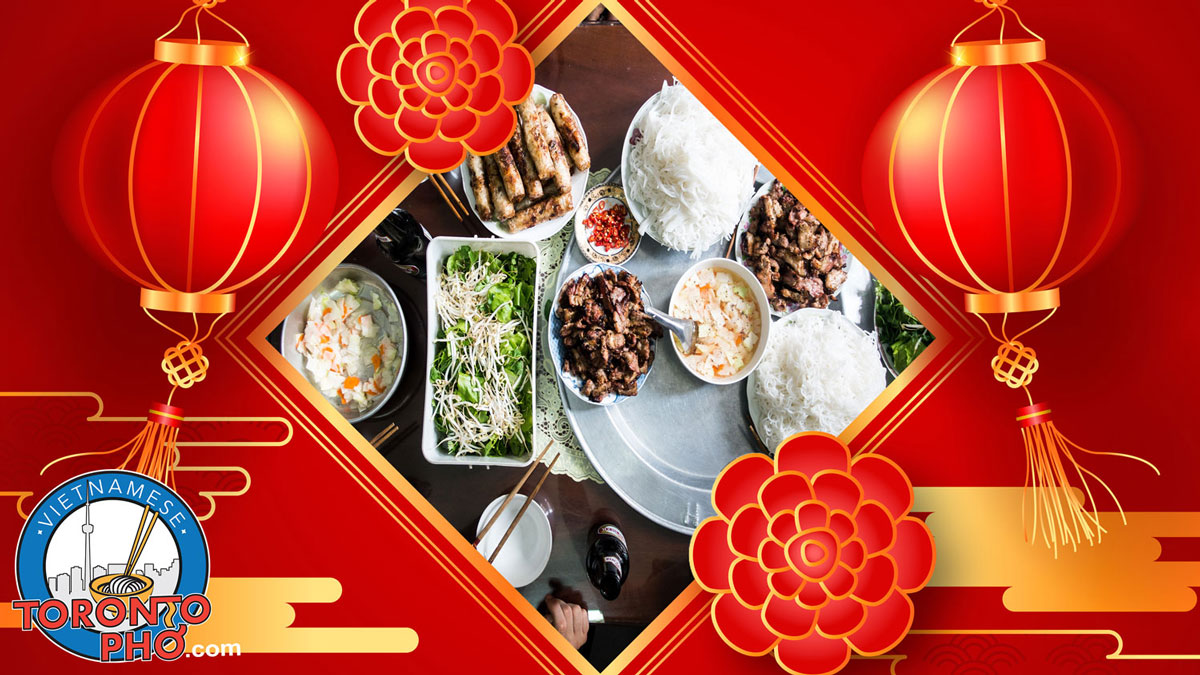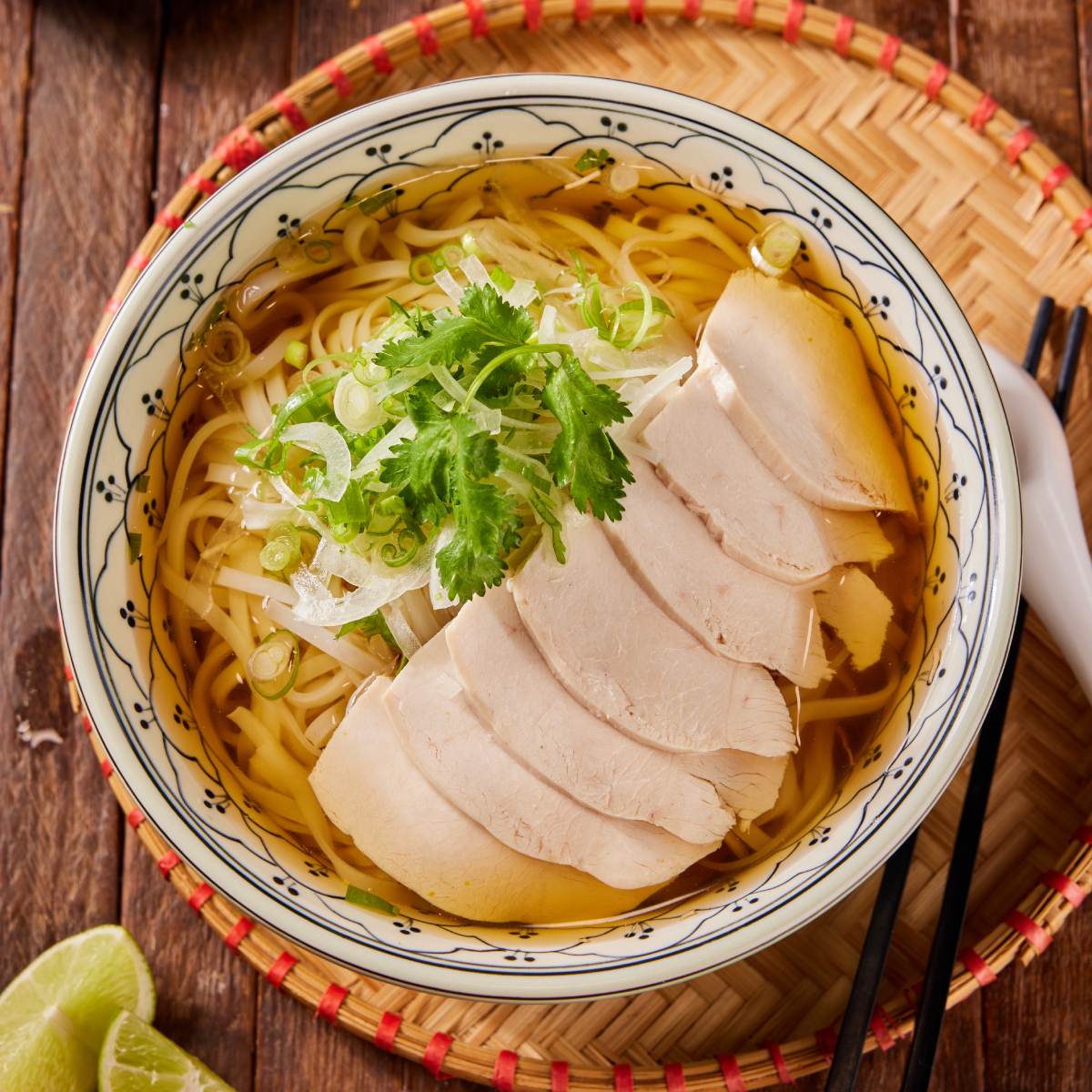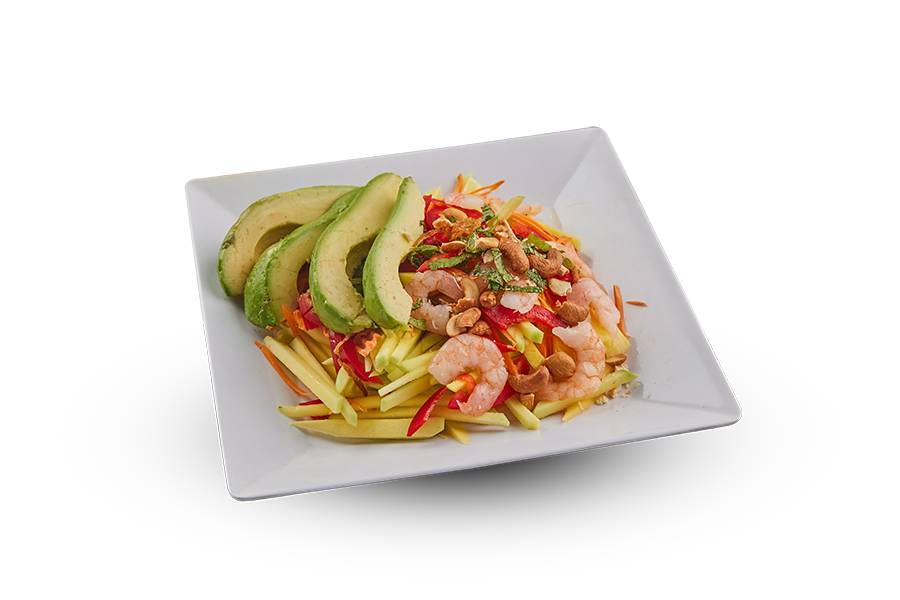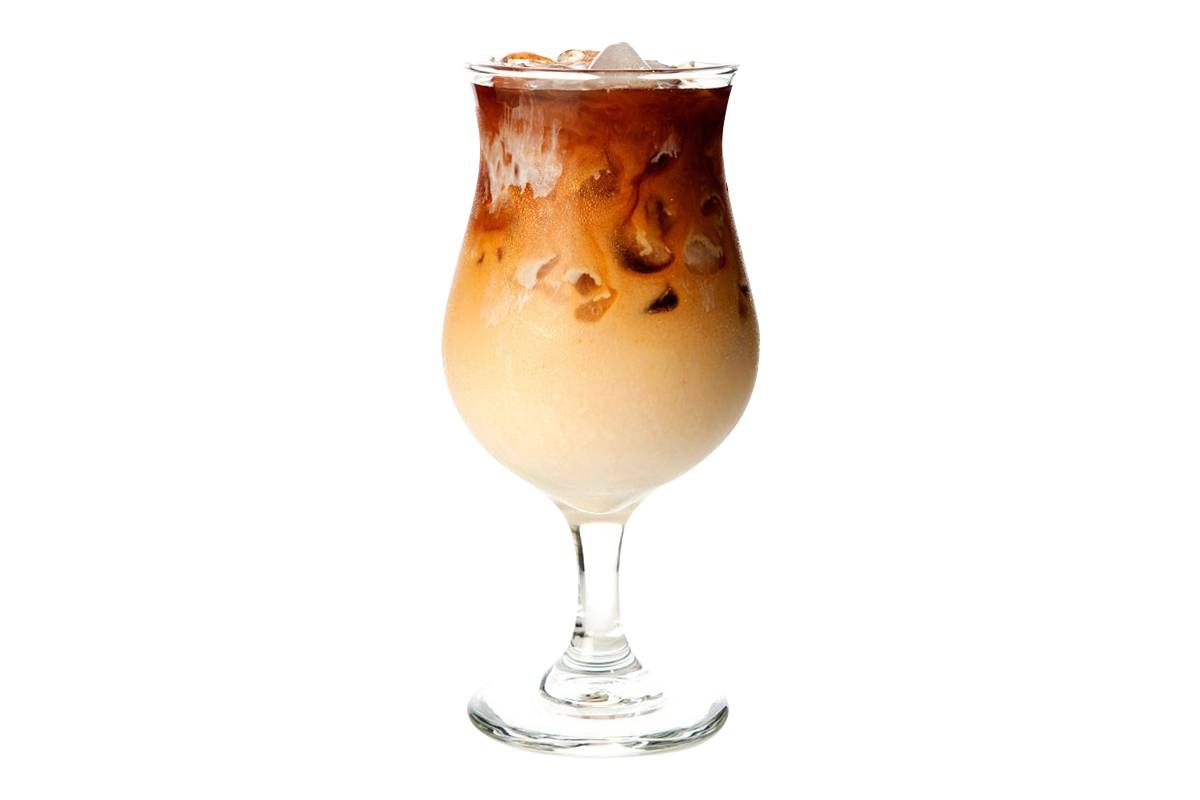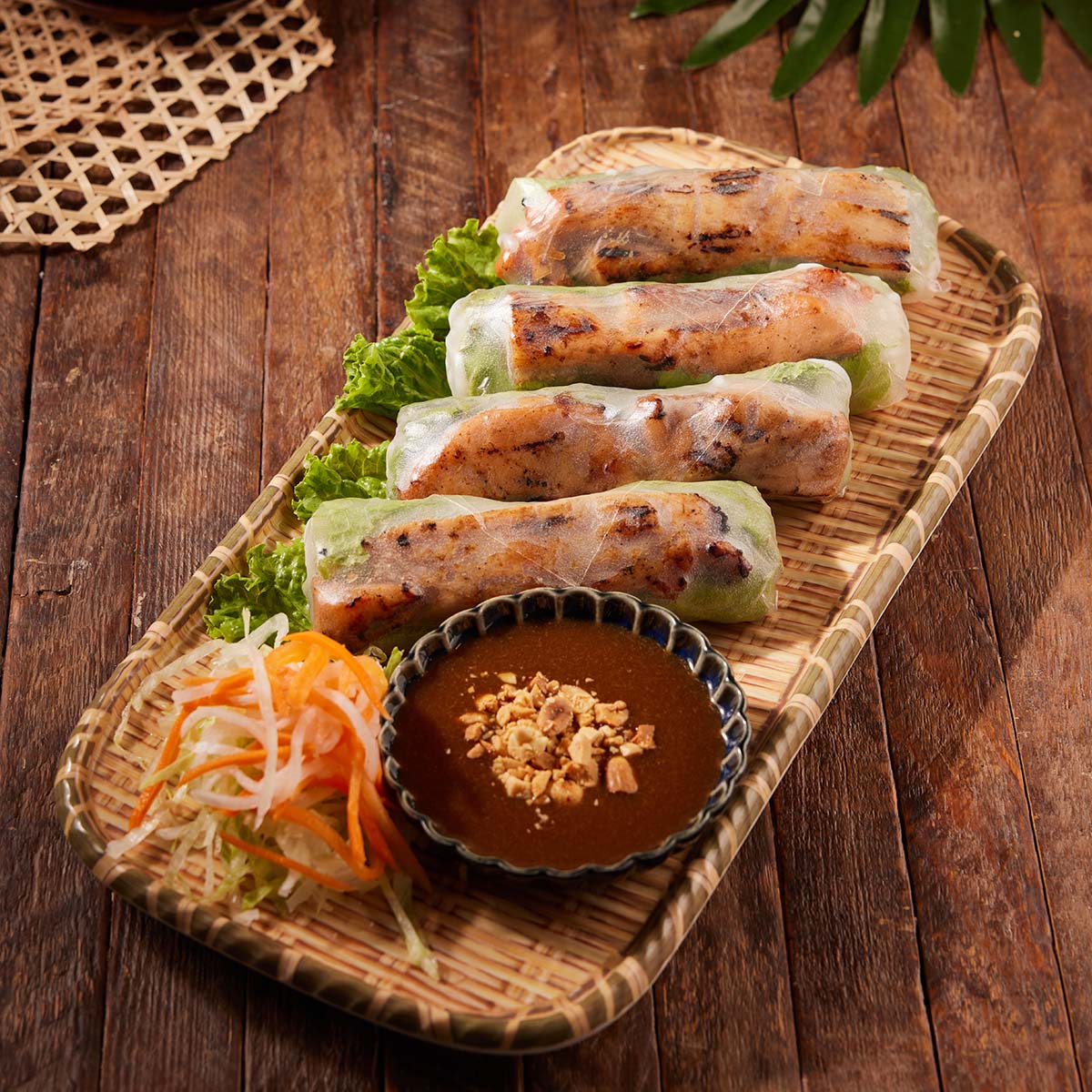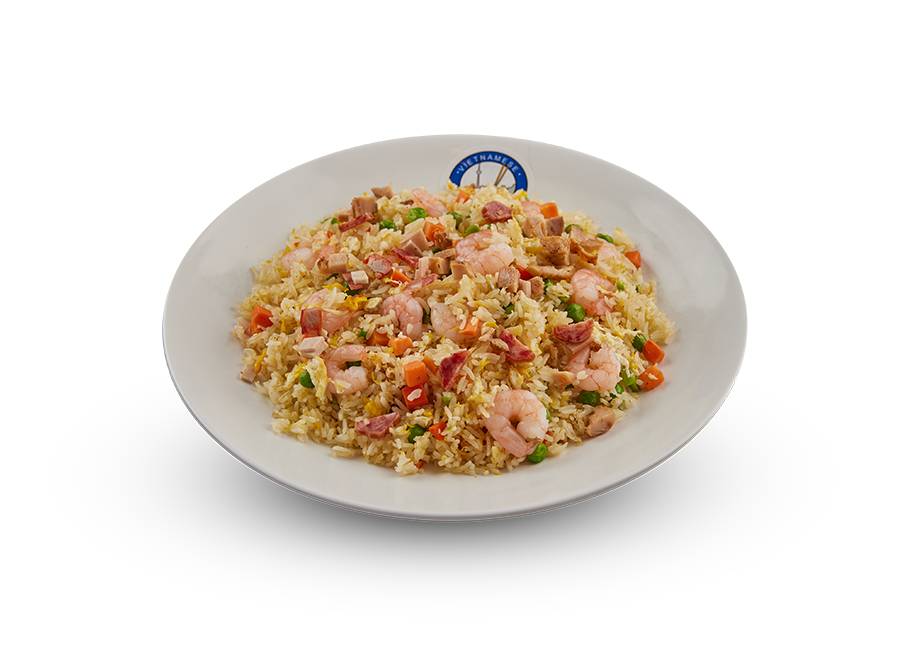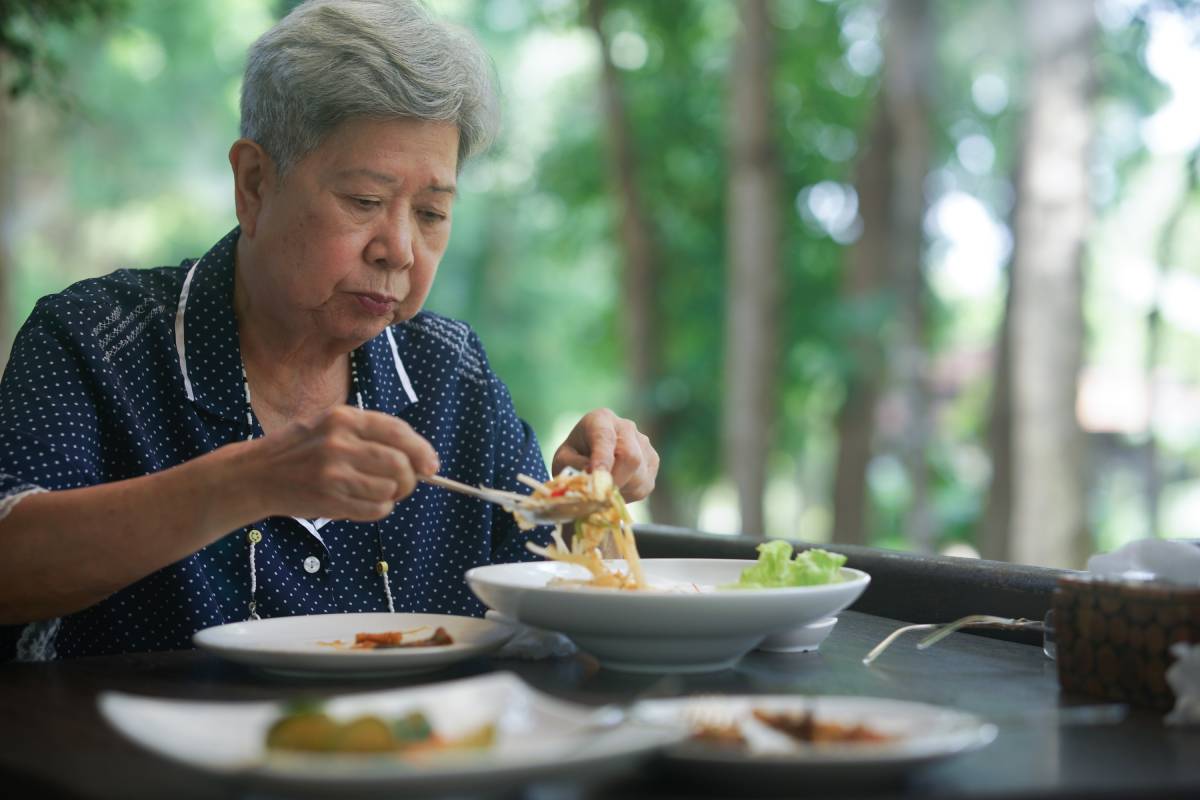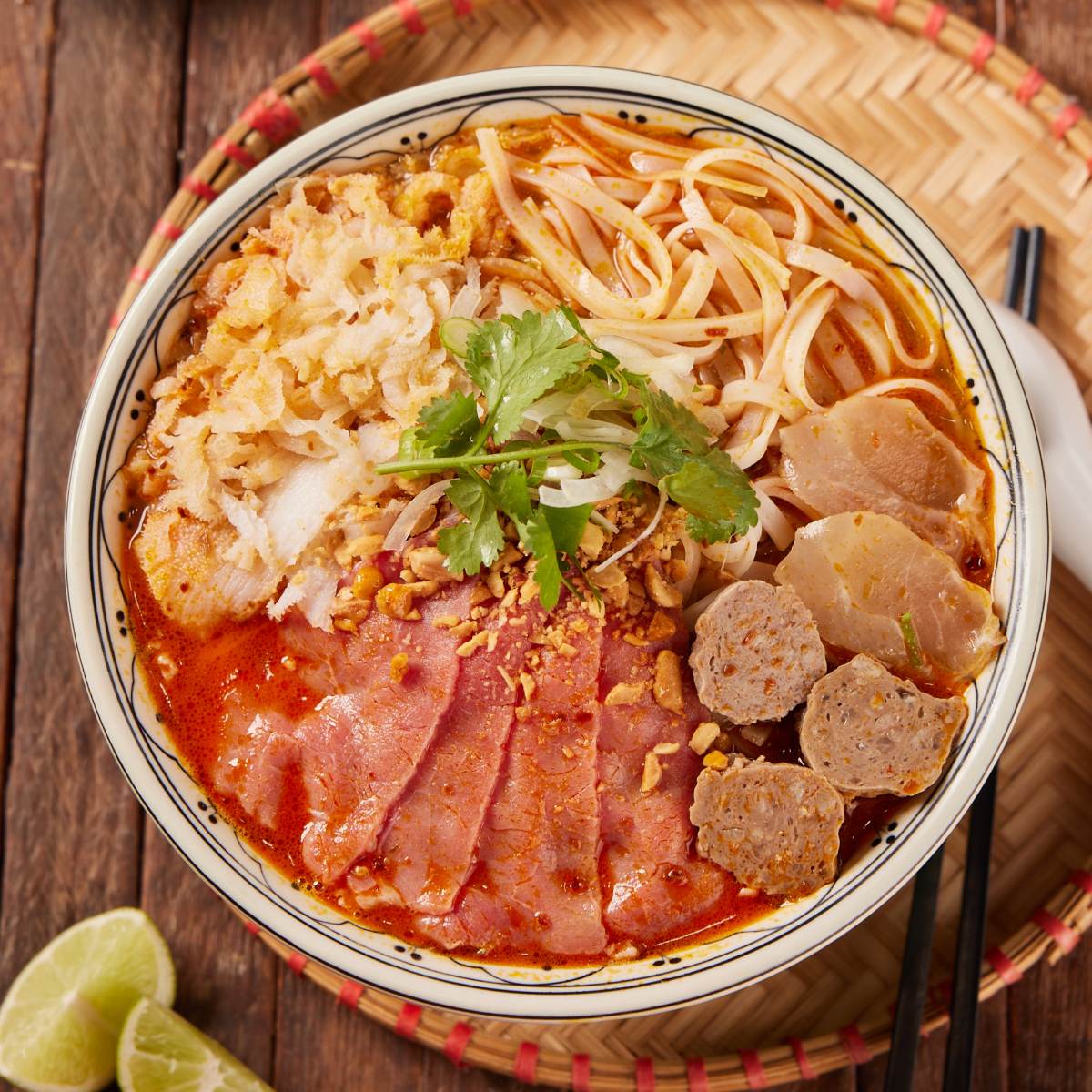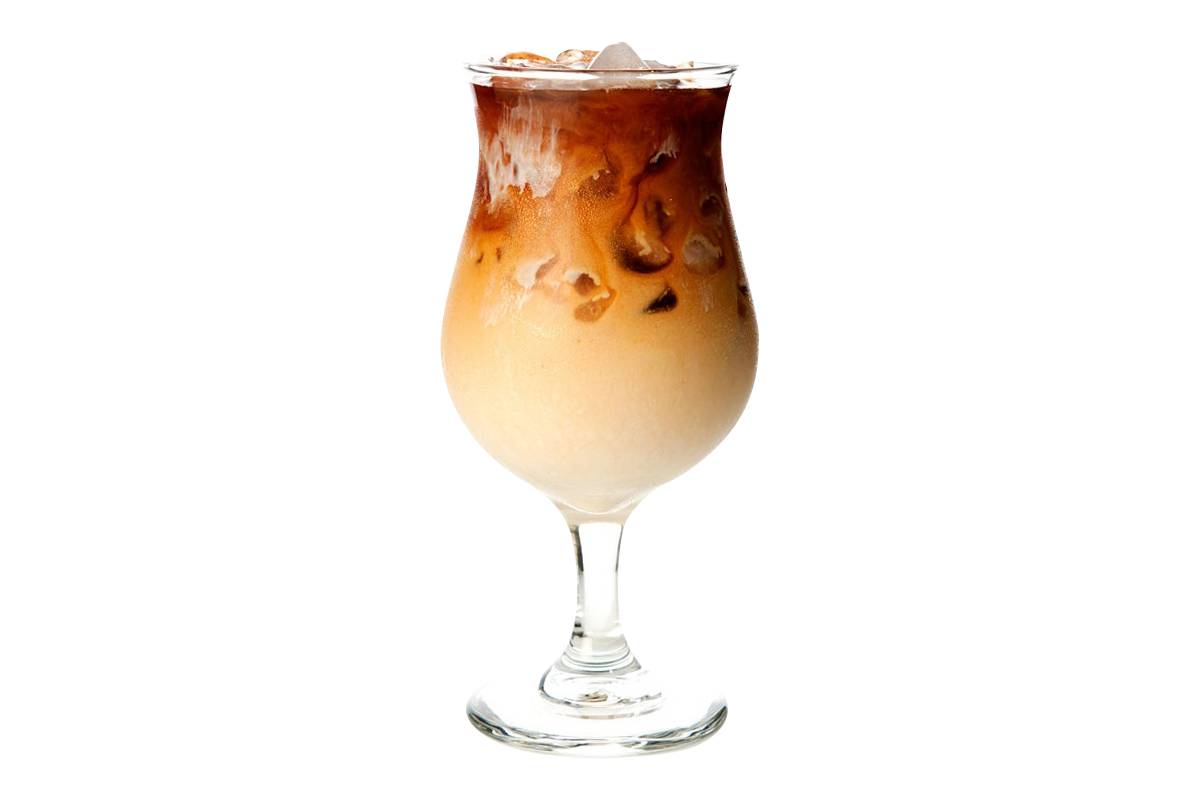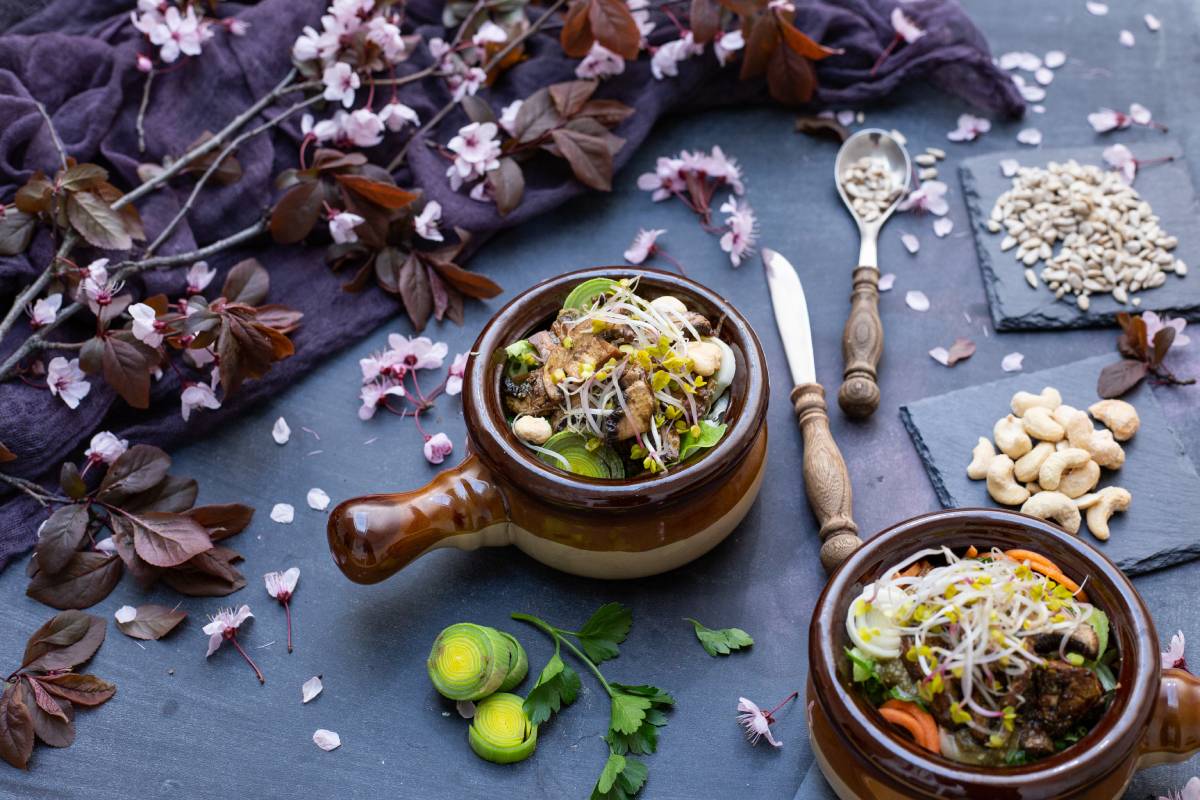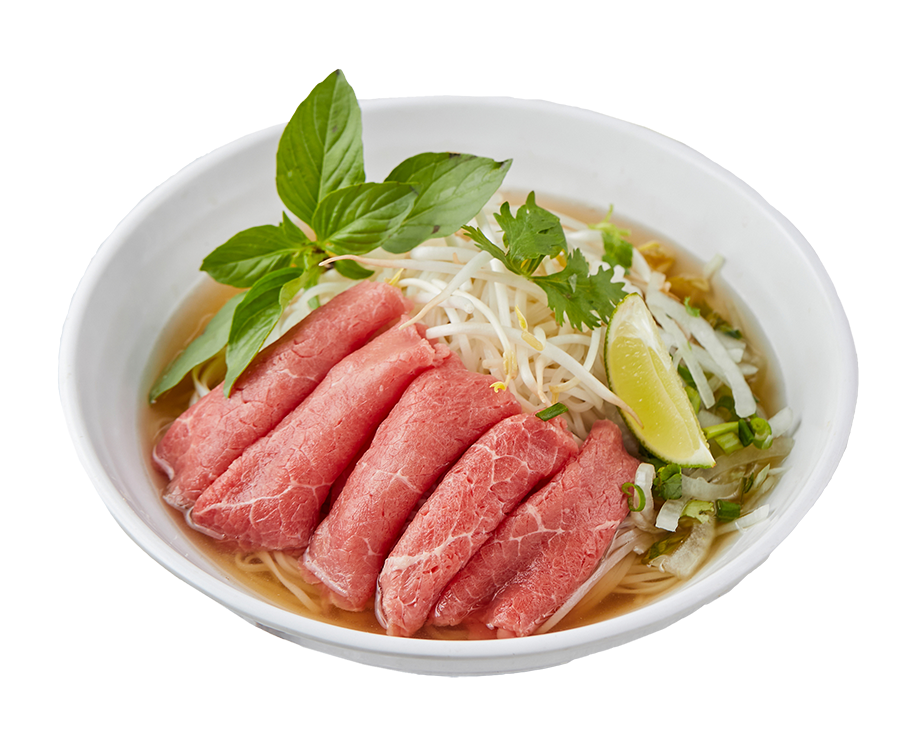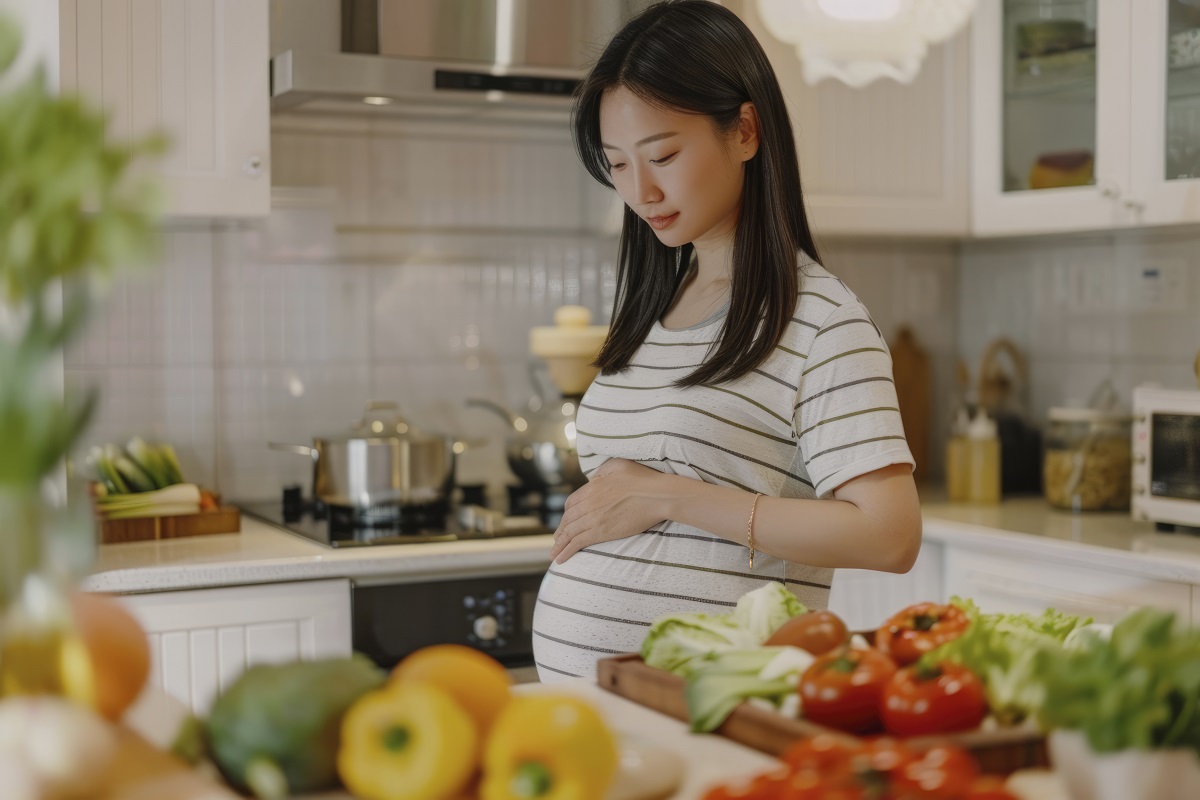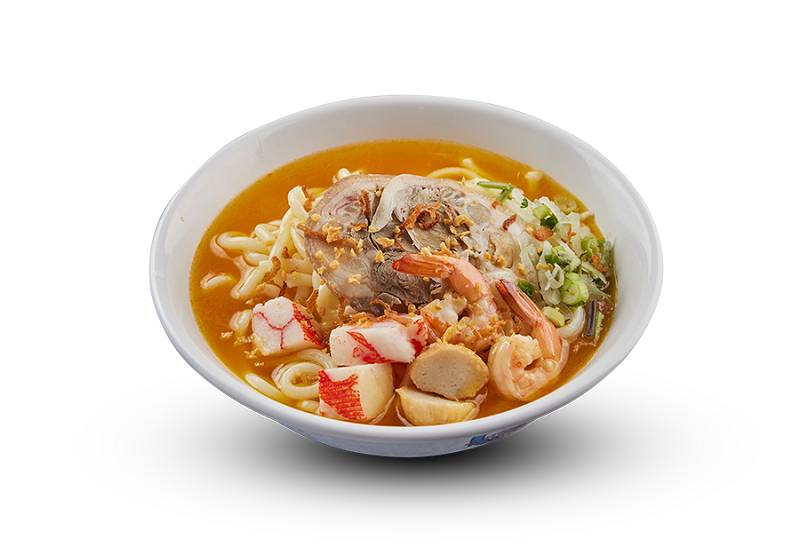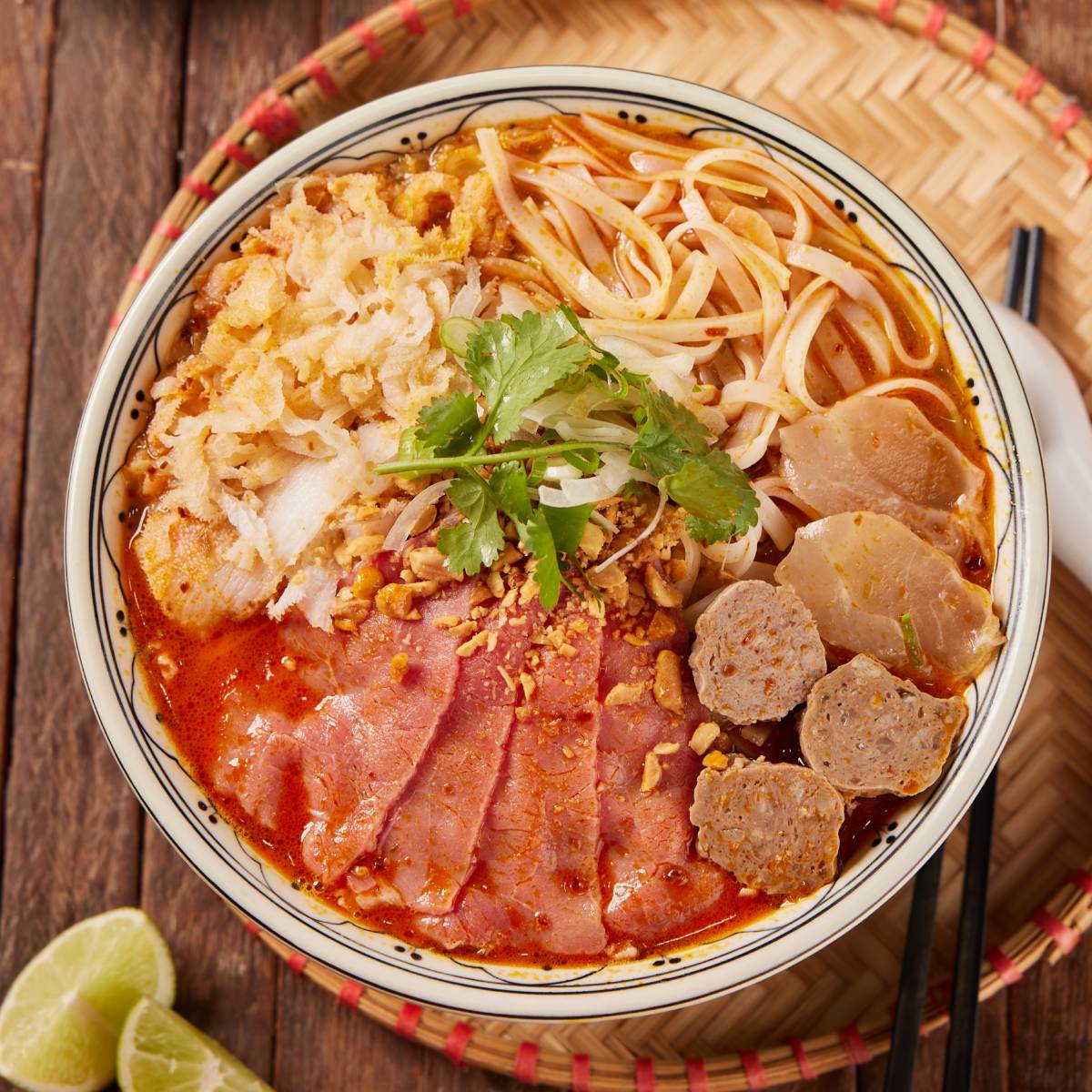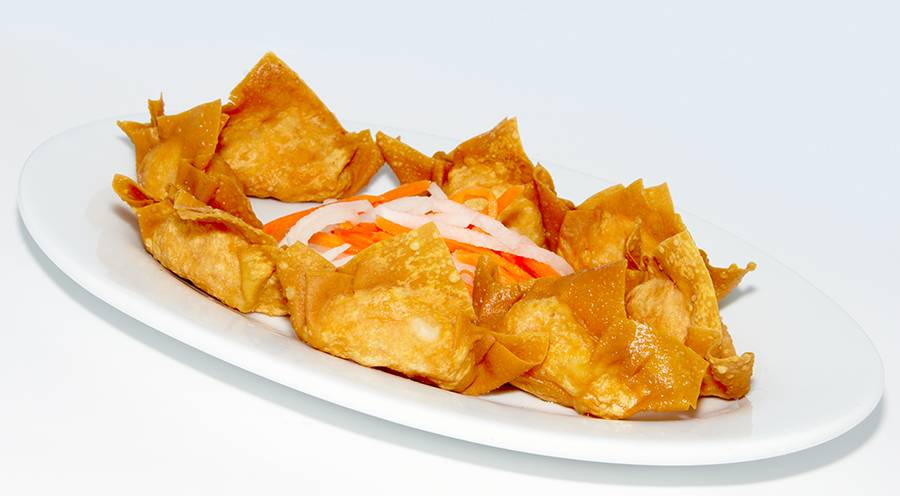Banh chung is believed to represent the Earth and deep meanings of the universe. Though typically steamed, it can also be fried in a frying pan with a little oil and moderate heat. There is not a lot of oil used in Vietnamese cuisine ever and in cooking banh chung, it is very much sparingly applied.
Banh tet, or cylindrical steamed cakes
Banh tet is another favourite Vietnamese Lunar New Year dinner food and is very similar to banh chung. The primary difference is in the shape. In changing the shape, the meaning of the food gets changed as well. Banh tet is cylindrical and represents the moon, usually made from long hours of boiling. This special cake is always made on New Year’s Eve in south Vietnam. Young people are expected to clean the banana leaves and to wrap the banh tet, while a family’s matriarch handles the seasoning of the pork, steaming of the mung beans, and preparing the sticky rice.
Cu kieu and dua moi, or pickles
A lot of root vegetables are fermented to create pickles in Vietnamese cuisine. Always tasty, they’re oftentimes eaten with braised pork and eggs in a light fish sauce. Vietnamese pickles understandably take weeks to properly prepare, which is what a housewife or mother would normally do. That said, more families these days will buy jars at local markets rather than making it from home.
As you’ll notice throughout this list, celebrations food-wise around New Year’s are handled predominantly by the top female household member. Depending on what’s being prepared, a matriarch may have to invest days or even weeks in creating the perfect meal for the whole family. Regardless of the root vegetables or leeks being used, pickles are some of the more traditional foods for Vietnamese Lunar New Year that many families enjoy.
Boiled chicken
Boiled chicken is a great multi-purpose protein source, used in everything from New Year’s Vietnamese pho to being added into salads and other dishes. Boiled chicken has long been a Lunar New Year favourite in Vietnam, enjoyed for decades by families. Chicken prepared like this can be enjoyed on its own as well, sometimes topped with Vietnamese coriander and eaten sauced with salt, pepper, and lemon juice. The boiled, skin-perfect chicken represents a good beginning to a Vietnamese New Year.
Nem ran or cha gio, or spring rolls
The best appetizer you’ll find in the large catalogue of Vietnamese cuisine are spring rolls. Consumed daily, they are indispensable in the traditional Lunar New Year feast. When fried, they’re delightfully crunchy with an interior of meat, egg, mushroom, onion, shrimp, and peanuts. You can also get them fresh, wrapped in rice paper and filled with fresh vegetables. They’re served at virtually every Vietnamese restaurant worldwide and even though they aren’t unique to New Year’s, they’re expected in the lead-up to the bigger plates of food on their way come the occasion.
Mut, or candied fruits
Candied fruits are classic Vietnamese fare. Literal kilograms are bought every year, including coconuts, sweet potatoes, tamarind, and mango. Brightly colored, they really light up a table come New Year’s and are a fun way to get the kids and younger people interested in the occasion. Candied fruits are very popular at local markets in Vietnam, as the ultimate chew candy.
Seeds and nuts
Salt-roasted seeds and nuts are another popular Lunar New Year food in Vietnam. Local marketplaces stock up on these in anticipation of the big day, usually mixed from cashews, watermelon seeds, lotus seeds, sunflower seeds, sesame seeds, and peanuts. In line with the philosophy of balance in Vietnamese cuisine, a mix of salted seeds and nuts alongside sugar-covered candied fruits on the dinner table make for a friendly, celebratory occasion.
Why is food so important to Vietnamese New Year?
For centuries, Lunar New Year has been a time for families to gather. They pay tribute to their ancestors, connect with those that are around the table, and set themselves up for an exciting year ahead.
The reason to gather, from a cultural perspective, is food. These are recipes passed down from generations, connecting the present to the past. The ingredients used are grown from local grounds, connecting the people to their country. Lunar New Year is truly on opportunity to connect Vietnamese from all walks of life, some believe to be the ultimate communication between the worlds of those who live and the dead.
Cooking and eating are very, very important to Vietnamese culture overall, and therefore are important to any sort of event like this, whether it’s New Year’s, a wedding, or a funeral. Around the dinner table is where we connect, as human beings and in spirit. These are just some of the meals seen at Lunar New Year. There are plenty others as well! From the holiday season in December through to Lunar New Year in January, stop by TorontoPHO any time.

